
Two blank cheques: are Ontario and B.C. copying the homework?
Governments of the two provinces have eerily similar plans to give themselves new powers to...
Along an 18-kilometre stretch of Hurontario Street, there are barely any signs telling people that “it’s happening” — the slogan for Metrolinx, the provincial transit agency.
Instead, all you can see are buses and cars fighting to get through the hundreds of black-and-orange striped pylons that have turned the busy arterial running through Mississauga and Brampton into a maze of construction.
Plazas are ringed with their own signs, declaring “we’re still open,” in an attempt to direct potential customers through the chaos. Bus shelters have been removed and replaced with makeshift raised platforms in the middle of the road.
Some intersections have been dug up while others have become collection points for a tangle of blue pipes. Older lane markings have been only partially erased, confusingly fading into newly painted lines. Several sidewalks have disappeared, leaving pedestrians and cyclists to navigate through haphazard yellow fences.
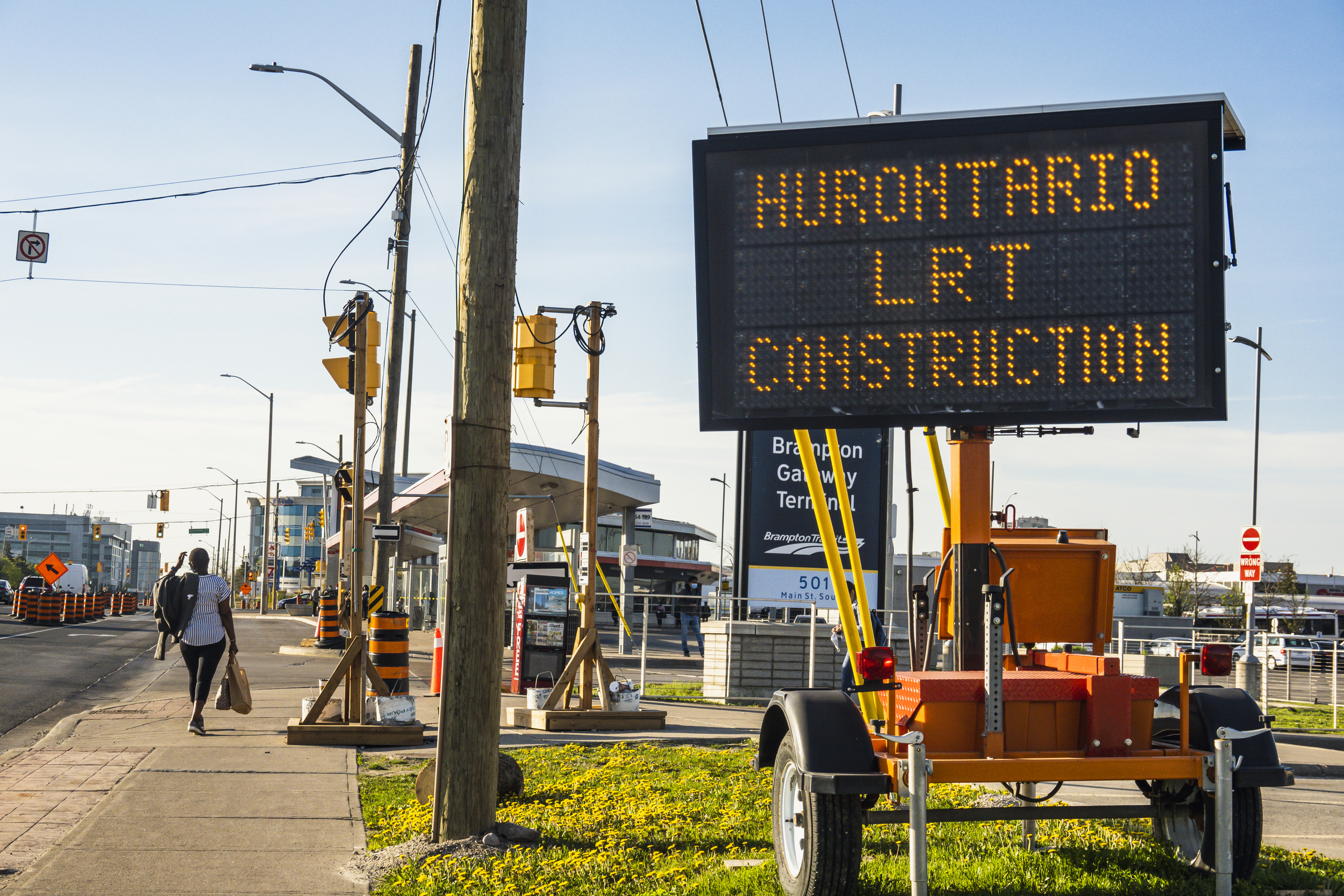
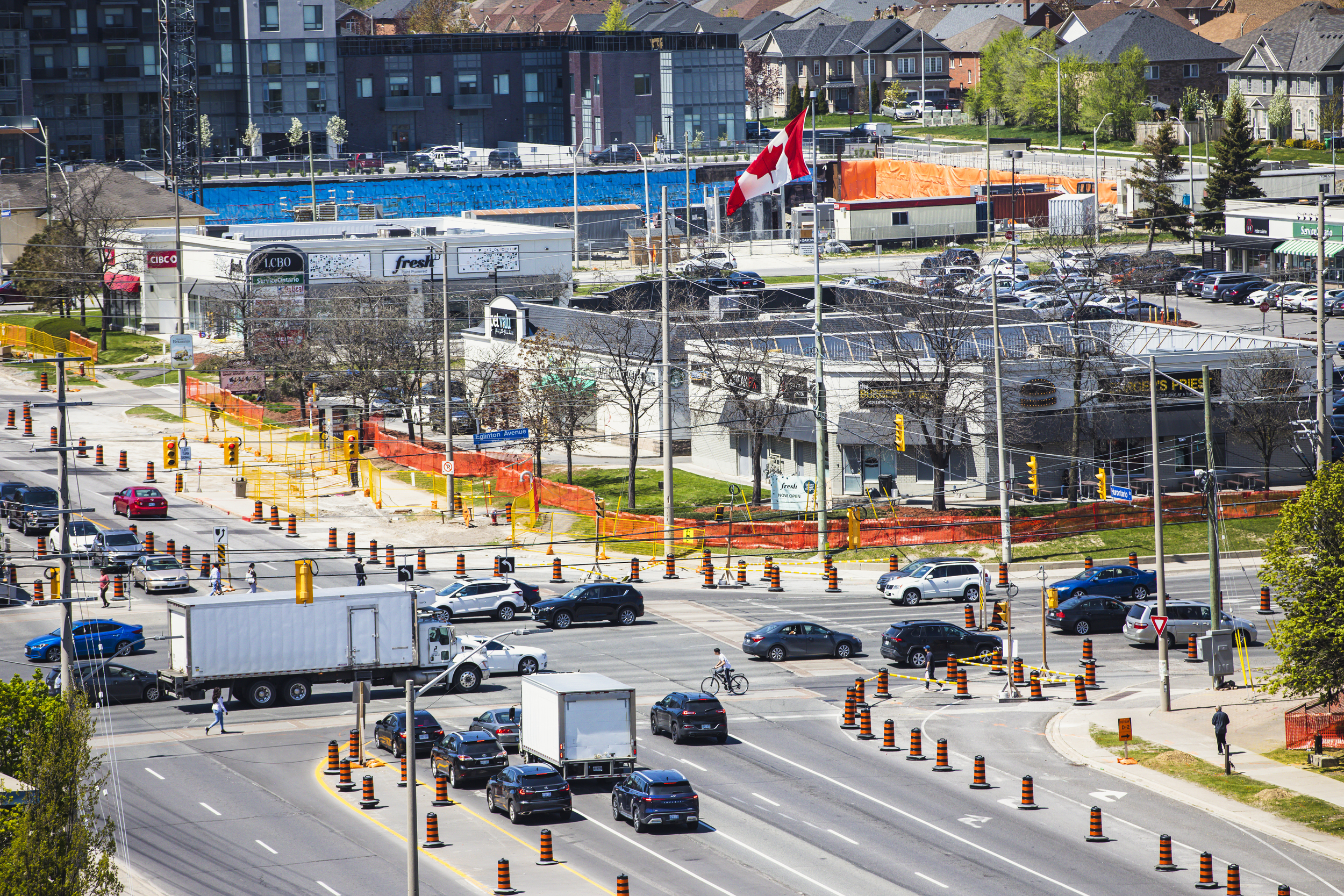
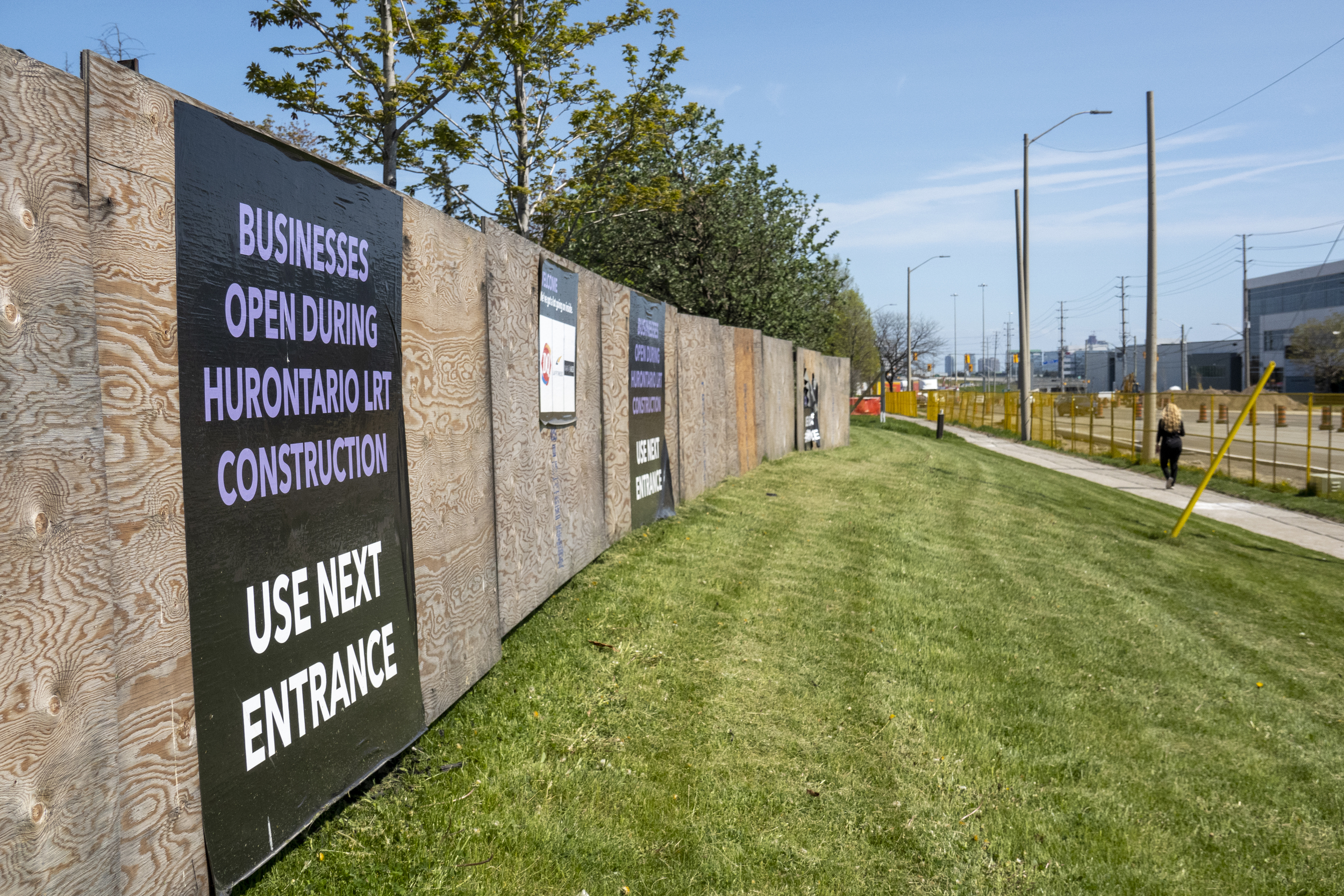
Something is definitely happening: the Hurontario Light Rail Transit (LRT) line, a $1.6 billion electric above-ground train project 14 years in the making. But on a Friday morning at Brampton Gateway Terminal, barely anyone knew what the construction was beyond a commuter’s headache, a bus driver’s daily struggle, a business owner’s nemesis and a resident’s apprehension.
The Light Rail Transit project is meant to connect Mississauga and Brampton to each other, and to the region around them: Toronto to the east and Oakville, Milton and Hamilton to the west. With an election around the corner, all three major parties are championing the Hurontario LRT. But some residents are extremely skeptical.
Top of mind for many of them is avoiding the failures of transit in nearby Toronto, which is sometimes fast but often unpredictable, with new transit projects taking interminably long to build — particularly the Light Rail Transit line along Eglinton Avenue that is approaching a decade of construction.
On a sunny day in mid-May, The Narwhal spoke to dozens of commuters, bus drivers, business owners and residents along the planned transit line. While opinions differed on exactly how to make it happen, the people of Mississauga and Brampton all agree: something’s got to help the region move. Right now, though, many locals don’t know about the new line at all, or how it might impact their lives.

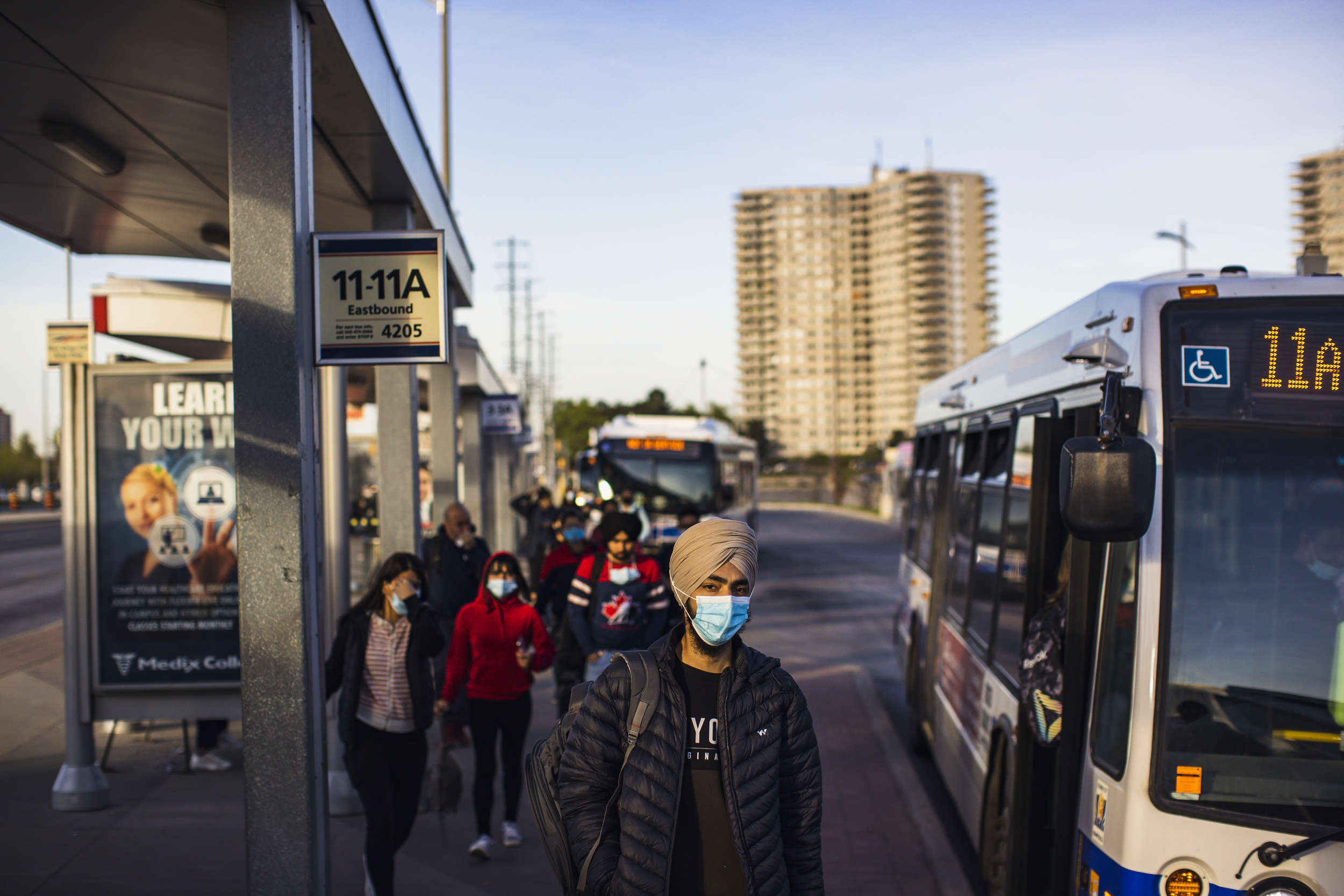
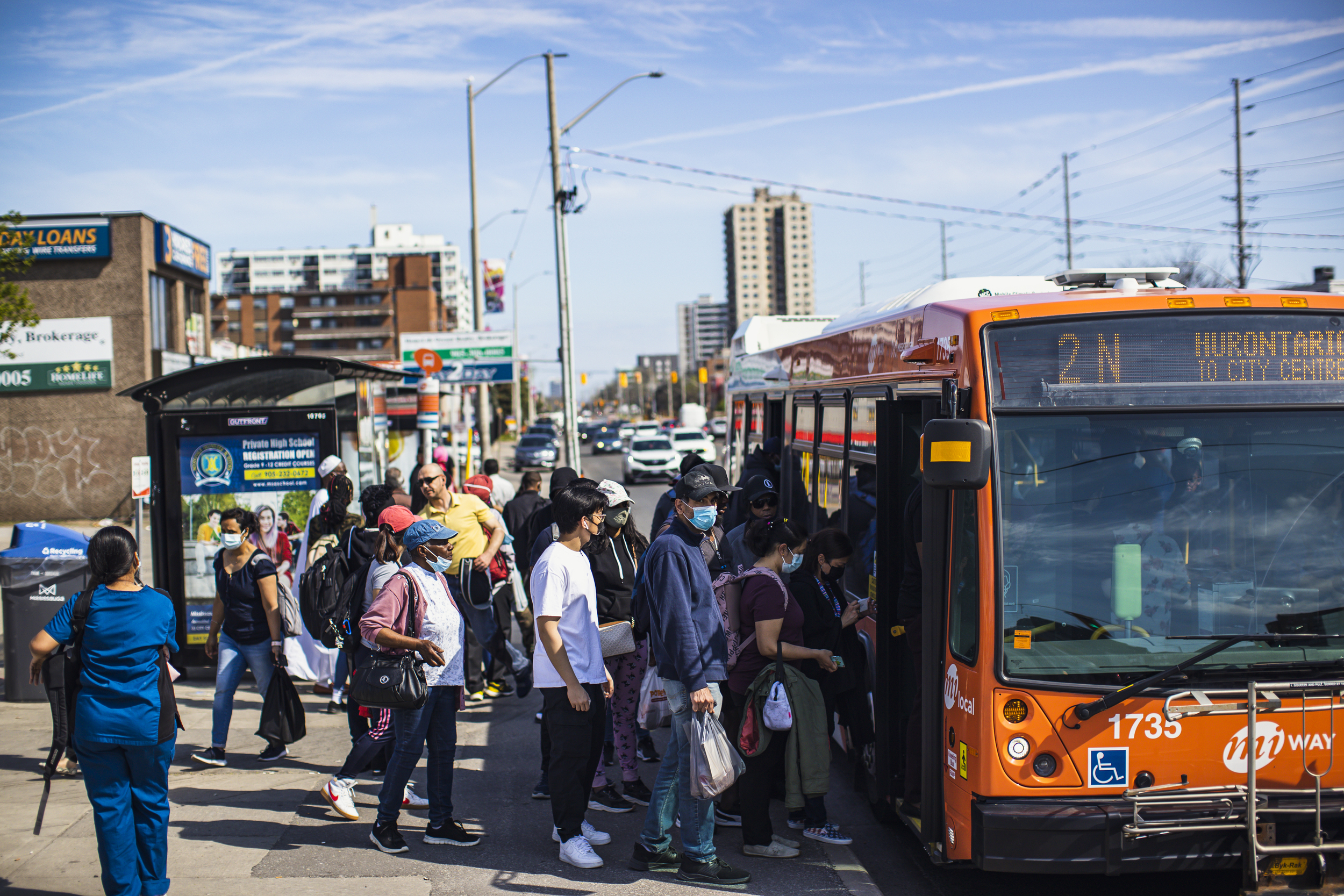
The Hurontario line is one of the province’s biggest transit projects outside of Toronto, stretching from Lake Ontario in the south to the edge of the city of Brampton in the north. It is expected to be up and running by 2024. Along the route is a 100-year-old creek that needs to be preserved, some very old bridges that need to be bolstered and multiple spots that will need new flyovers for better highway and commuter access to the train.
Mississauga and Brampton are Canada’s sixth- and ninth-largest cities, respectively — massive sprawling suburbs home to a combined total of 1.5 million people, a population that’s rapidly growing. They accept the province’s largest number of immigrants, including international students who travel daily to schools across the Greater Toronto Area. The two cities are Ontario’s logistics nerve centre, bringing in a constant influx of thousands of workers needed for distribution centres run by Amazon, Canada Post and Walmart, as well as a national and international trucking industry and more.
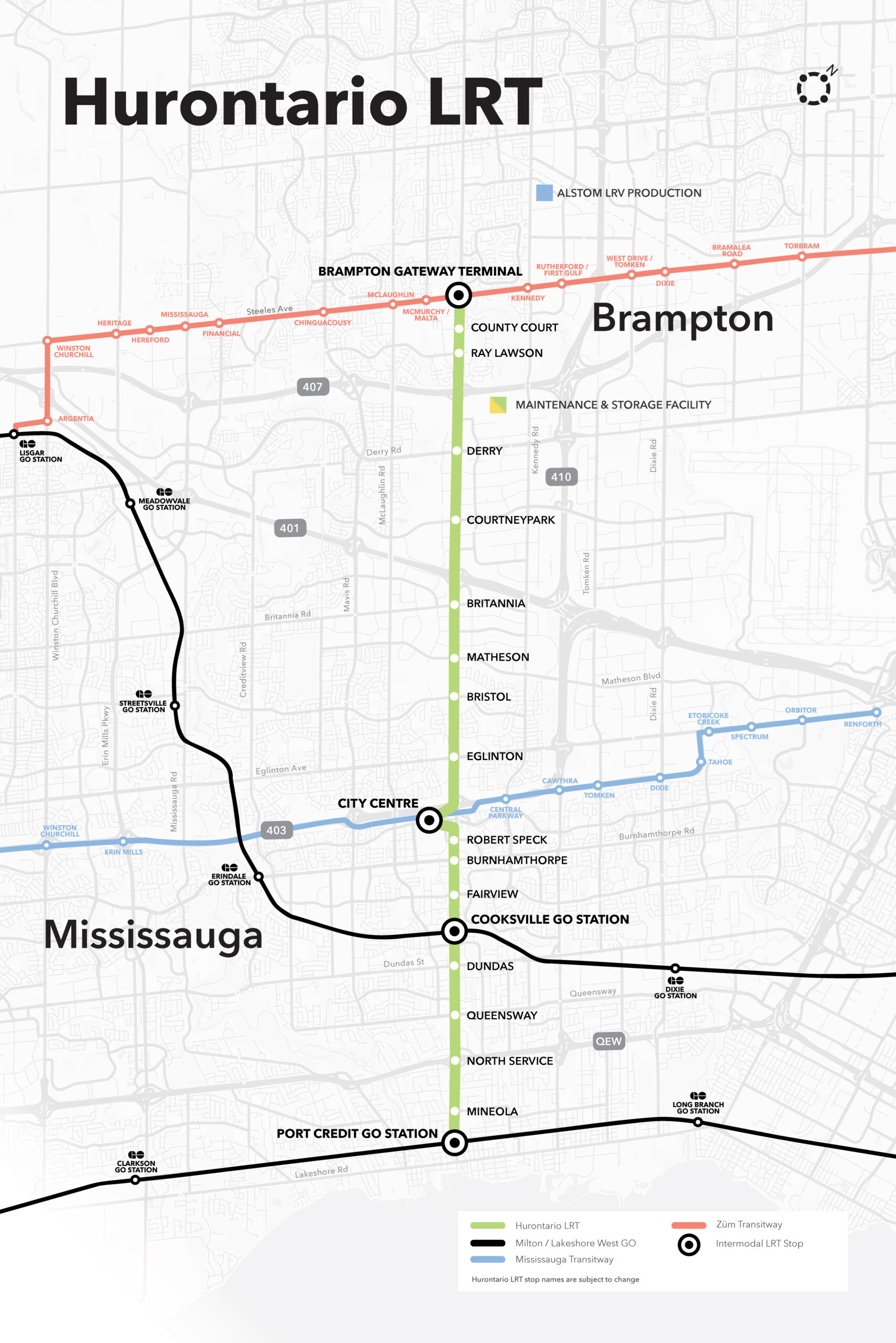
For decades, public transportation in these cities has meant a chaotic network of buses. Proposals to bring alternative modes of transportation here have always been political, with huge sums of money on the line and intense developer interest.
Somewhat ironically, the Hurontario line will also be known as the Hazel McCallion Line, after Mississauga’s long-time former mayor. Often called “the queen of sprawl,” McCallion held office from 1978 to 2014, leading the transition of Mississauga from pockets of farmland into a busy city of single-family homes and a few highrises — one that offered very few public transit options. It’s made some riders cynical about whether things can get better.
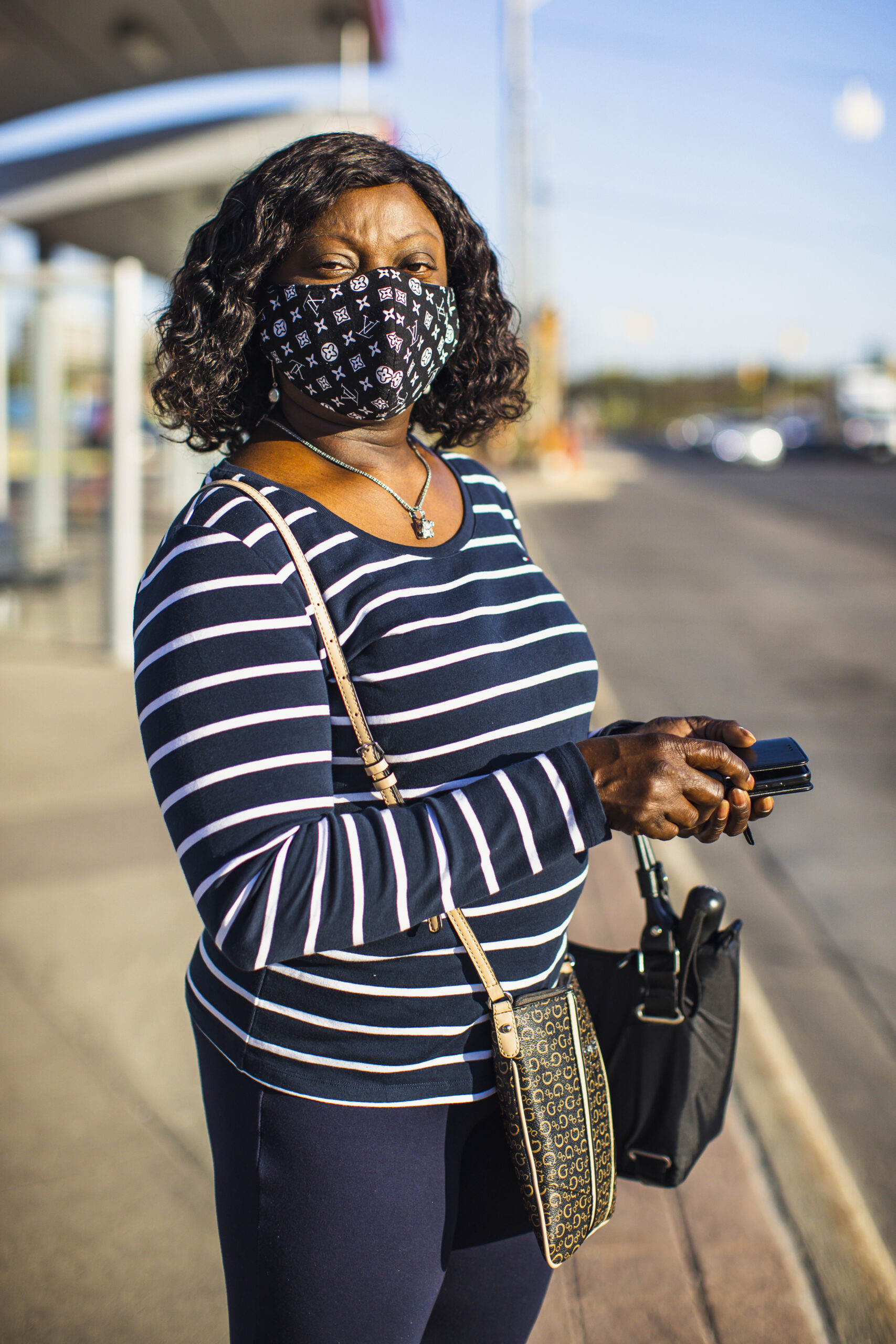
Matthew, a Brampton resident of 22 years waiting for a bus on the other side of the terminal, and who doesn’t want to share his last name, agrees.
“It’s a total waste of money,” he says. “The LRT is going to cause untold amounts of traffic. Buses have worked for me for the last 22 years just fine. The trains are not going to change my life.”
“Besides, buses are cheaper by a lot,” he adds. “They’re more flexible. They’re not run on tracks … Maybe the government should try fixing the roads and bus services first before dumping millions of dollars into a railway track.”
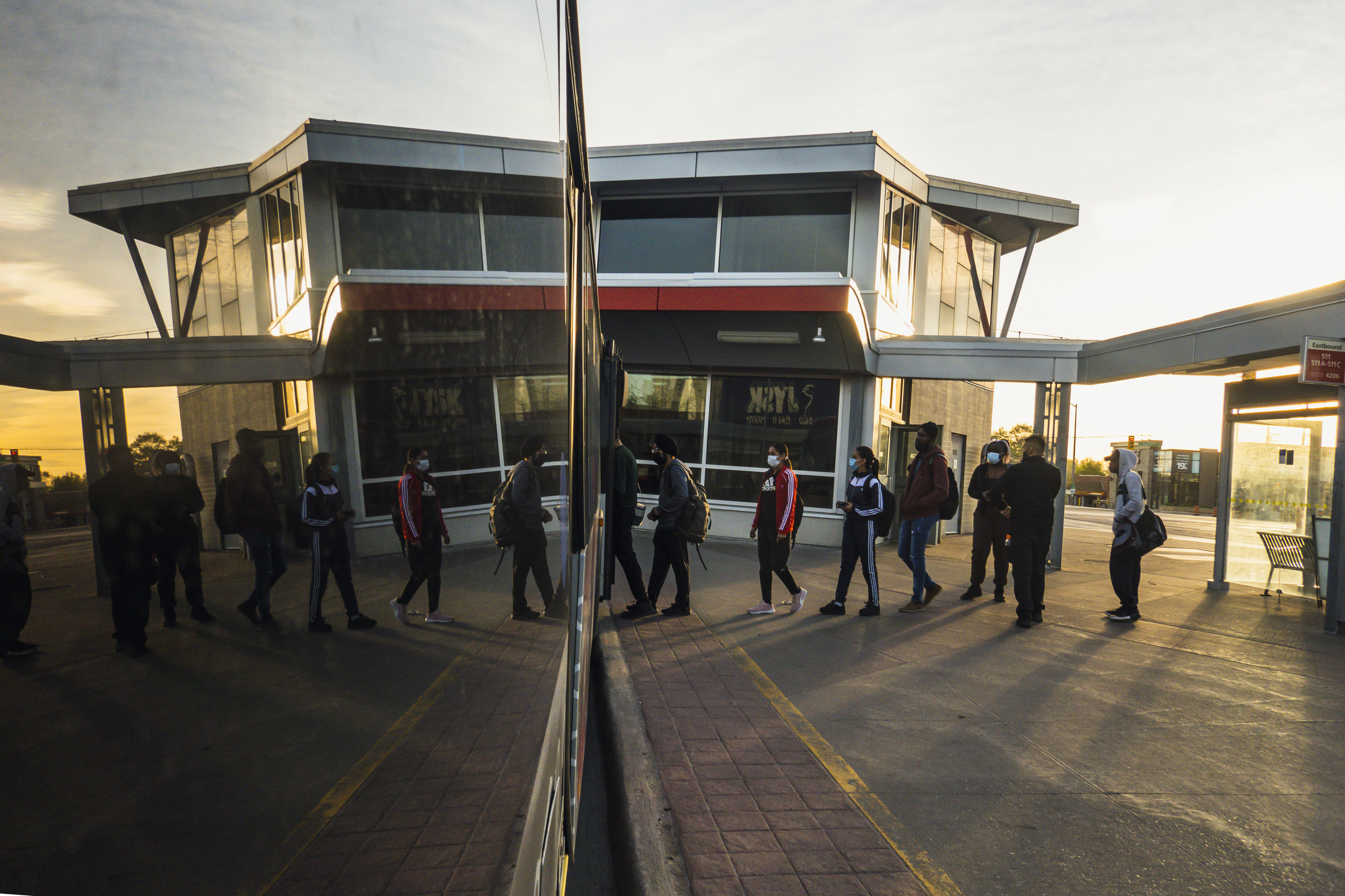
“The volume our cities have taken is too much,” says Arvinder Arya, a Brampton Transit bus driver who has served commuters for 12 years. “For the last three, four years, it seems like I’m driving 10 times more people than what I used to pick up.”
Although the Hurontario line has been in the works since 2008, Arya believes few people actually understand what’s happening, or what impact the new transit system will have on the city. He has heard very little about it from his employer: he doesn’t know if he’ll be retrained to drive the LRT or stay on as a bus driver, to start. As someone who drives across the city a whole lot, Arya says you have to “really, really pay attention” to understand what the Hurontario LRT is supposed to be, and that it’s actually happening.
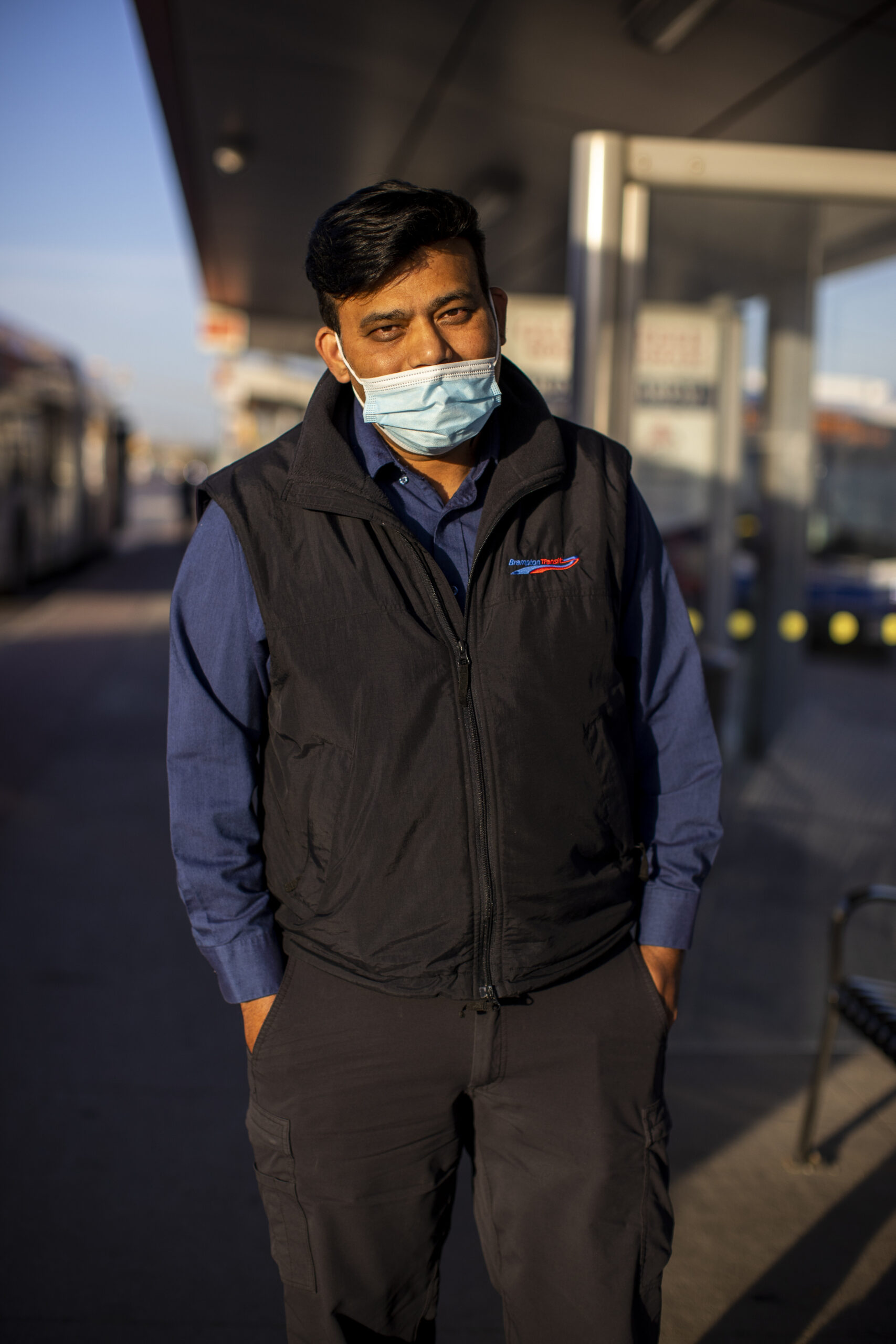
Projections by Metrolinx frame the new line as climate action. The transit agency says that by 2031, it expects 32 million riders on the Hazel McCallion line annually, and a yearly reduction of 3,964 tonnes of greenhouses gasses as people use transit instead of their cars.
For his part, Arya doesn’t believe that will happen. He says that while the LRT might help people who already travel up and down Hurontario Street by bus, those deep in the suburbs will still drive everywhere, in part because the single-street route of the new line doesn’t reach into all areas of the city. He points to the Mississauga Transitway as proof.
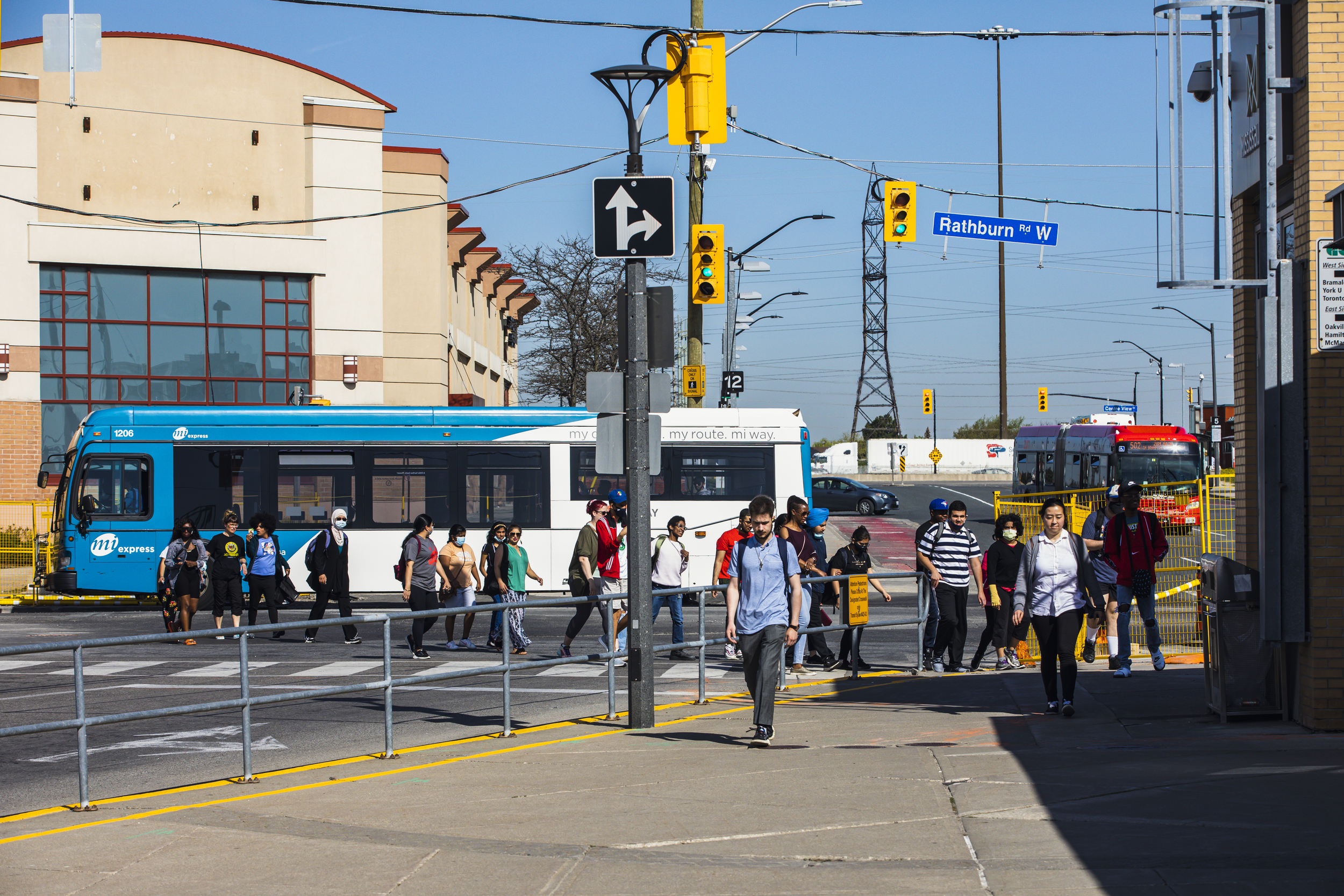
Five years ago, Ontario’s then-Liberal government completed the Transitway, 18 kilometres of dedicated busway meant to connect the city. But the bus stations that send vehicles along the priority lanes aren’t easily accessible without a car. Arya says that, to his eye, the parking lots along the transitway are always sparsely populated, suggesting that not many people are using the new option. Mississauga Transit did not respond to requests for ridership numbers by the time of publication.
It’s not enough to just build public transit, he says. You have to make it accessible, so people will use it.
Eleven kilometres down the street at Square One mall, a driver for Metrolinx’s GO bus service named George has also noticed the underused parking lots along the transitway. George, who has been a driver for three years and didn’t want to share his last name, thinks uptake on the new LRT will be just as slow.
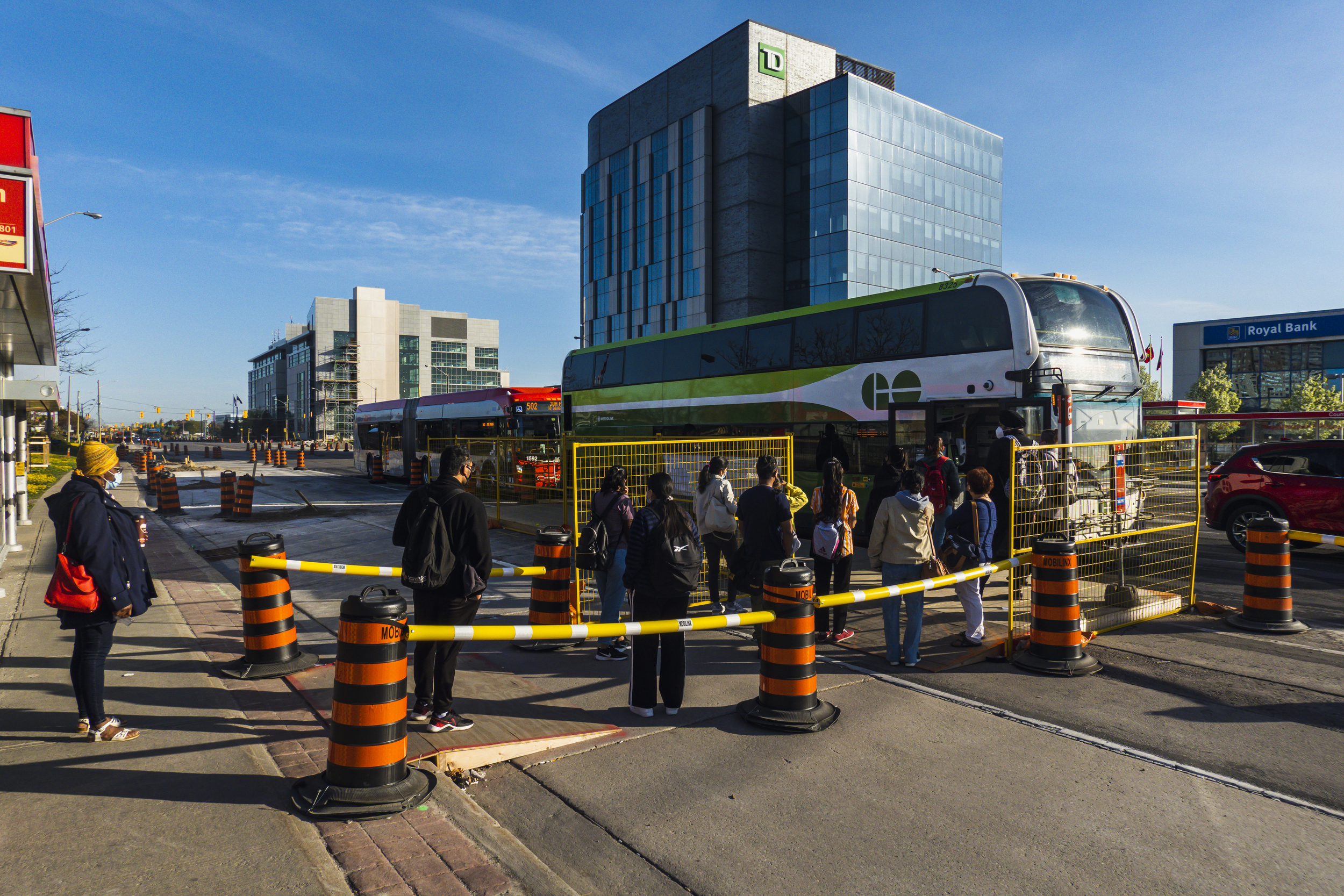
“For the foreseeable future, there will be a lot of empty trains,” says the Mississauga resident of 30 years. He thinks another dedicated bus corridor would have been a faster, cheaper solution.
“There are a lot of ways they could have rapidly improved service in this corridor. Instead of trying to plan these massive projects that take 10 years to do, a very simple solution would be, especially for Hurontario, priority lanes,” says George. “Just take a can of paint and say this lane is for buses only and put a light on key intersections that lets the bus be the first vehicle to go through. That would have a more immediate and noticeable effect.”
“Unfortunately, transit decisions are largely based on what’s going to get [leaders] elected. Bottom line,” George says. “But the most simple solutions, the non-sexy solutions, are the ones that help the most people.”
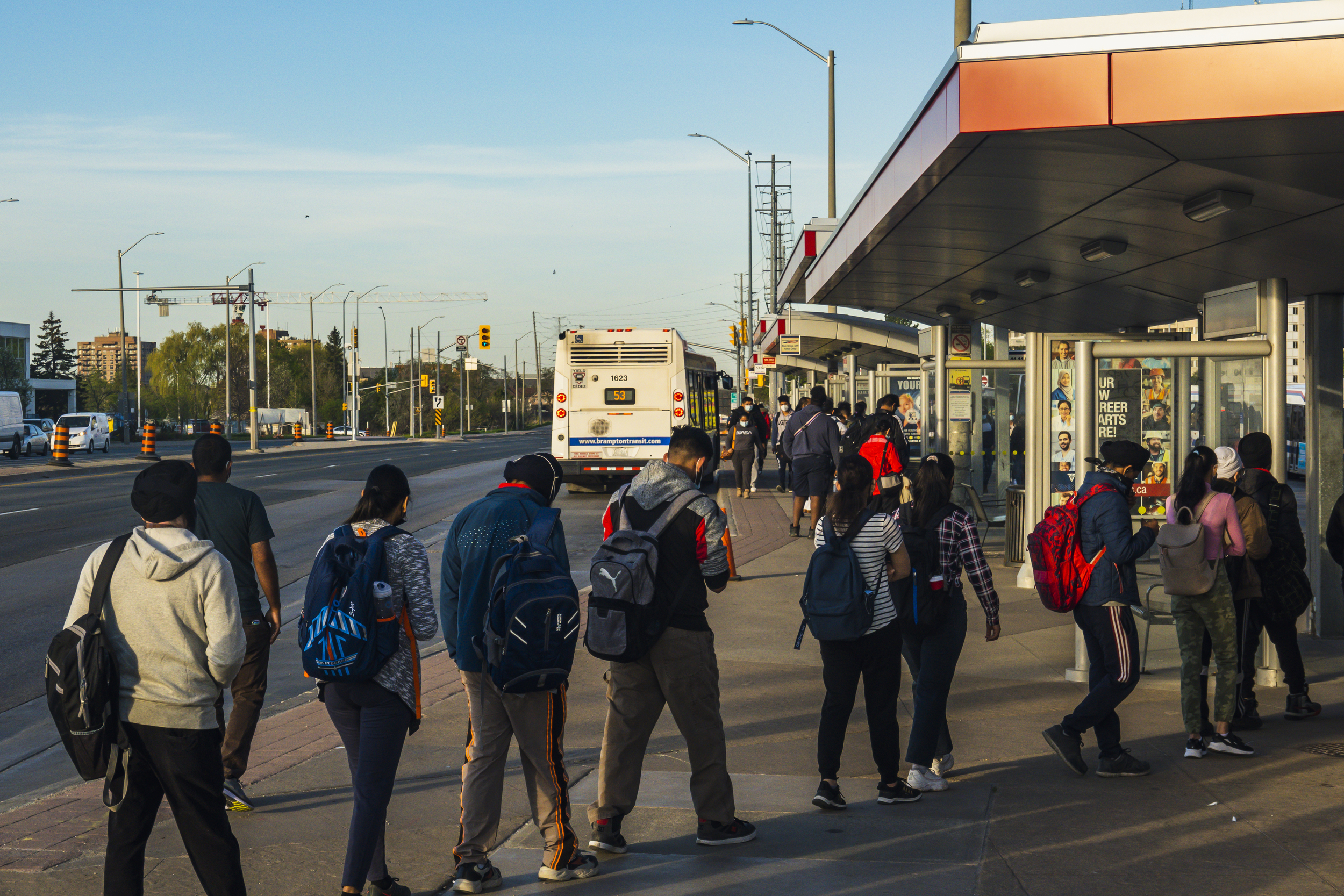
The Doug Ford government hasn’t always thought the Hurontario line was sexy.
Less than a year after Ford took office, his government instructed Metrolinx to cancel a section of the transit project, known as the City Centre loop, in a cost-cutting move. The three-stop loop was designed to reach residents and transit users in the present and future highrises around Mississauga’s rapidly developing downtown core. This includes a 37-tower project that will become home to 35,000 people over the next several decades.
For a long while after that decision, Ford and his government didn’t talk much about the Hurontario LRT despite pressure from Mississauga City Council to reconsider. He briefly mentioned it in a January 2022 interview with insauga.com, during which Ford hinted that he might reconsider the loop if “these developers that are putting the 40- to 60-storey towers up” would “pitch in” financially.
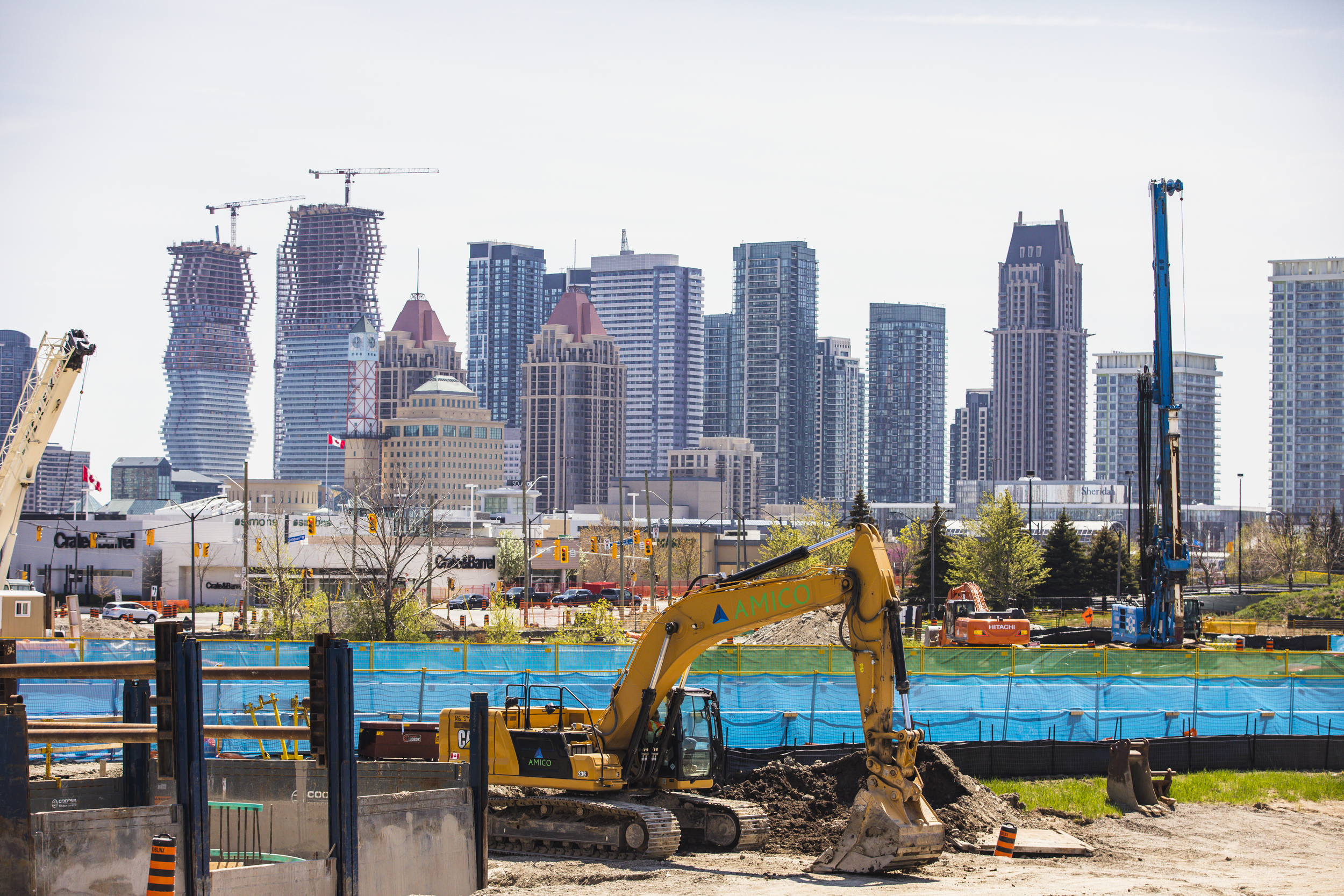
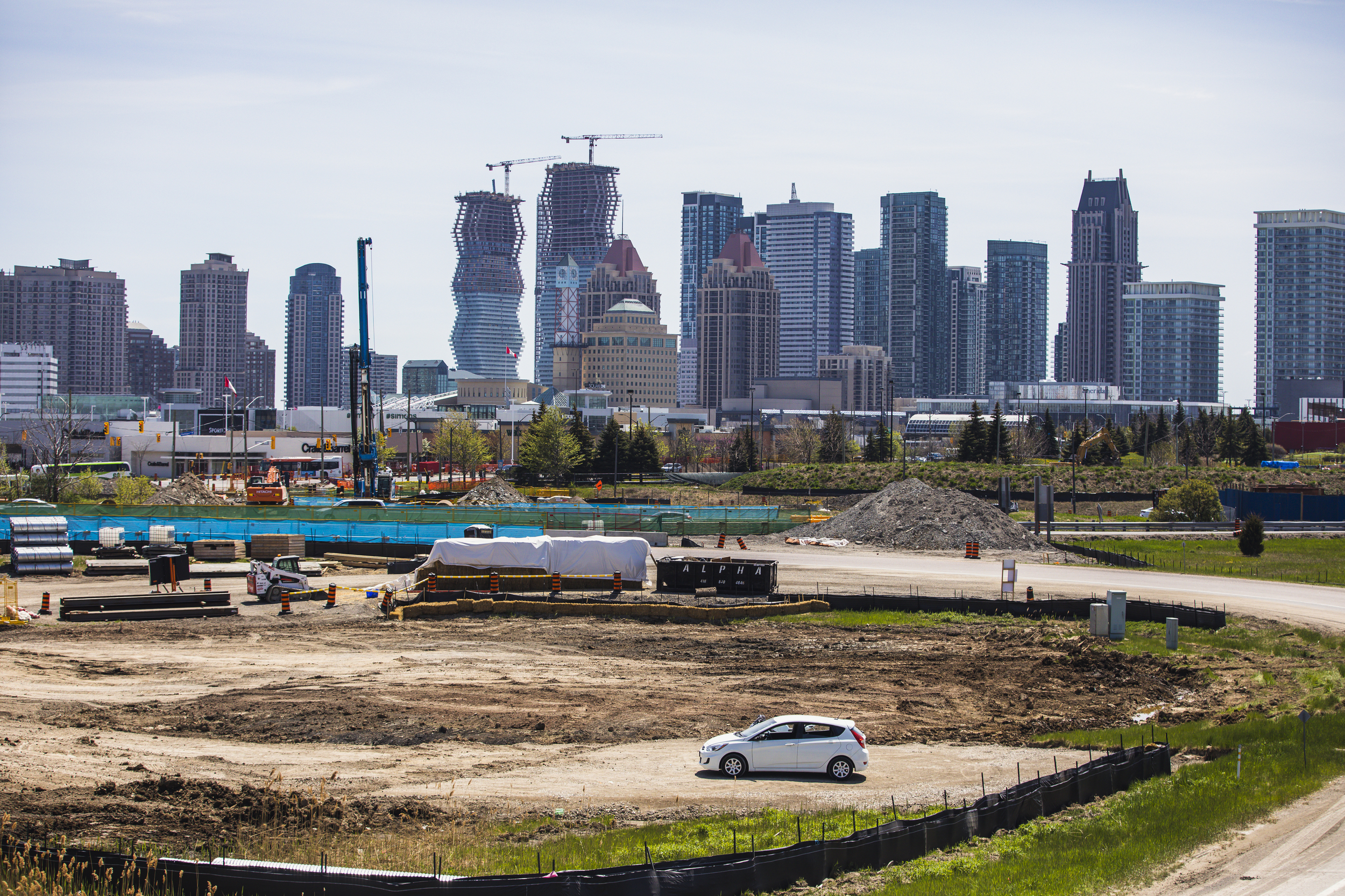
“We’re big into the transit-oriented communities,” Ford said in the interview. “I’m always open for expanding transit.”
Everything changed on Valentine’s Day 2022 — four months before this June’s election, on former mayor McCallion’s 101st birthday. To commemorate McCallion’s century-plus years on Earth, Ford paid a visit to Mississauga to rename the Hurontario LRT after her. As McCallion smiled next to Ford, he surprised onlookers by endorsing the City Centre loop as “something that we all want and we’ll make that happen eventually. Sooner than later.”
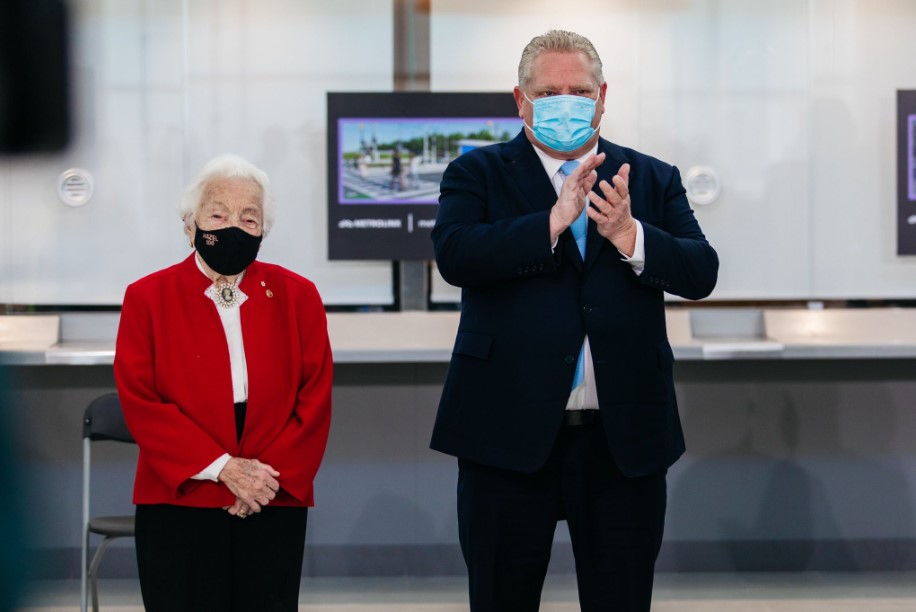
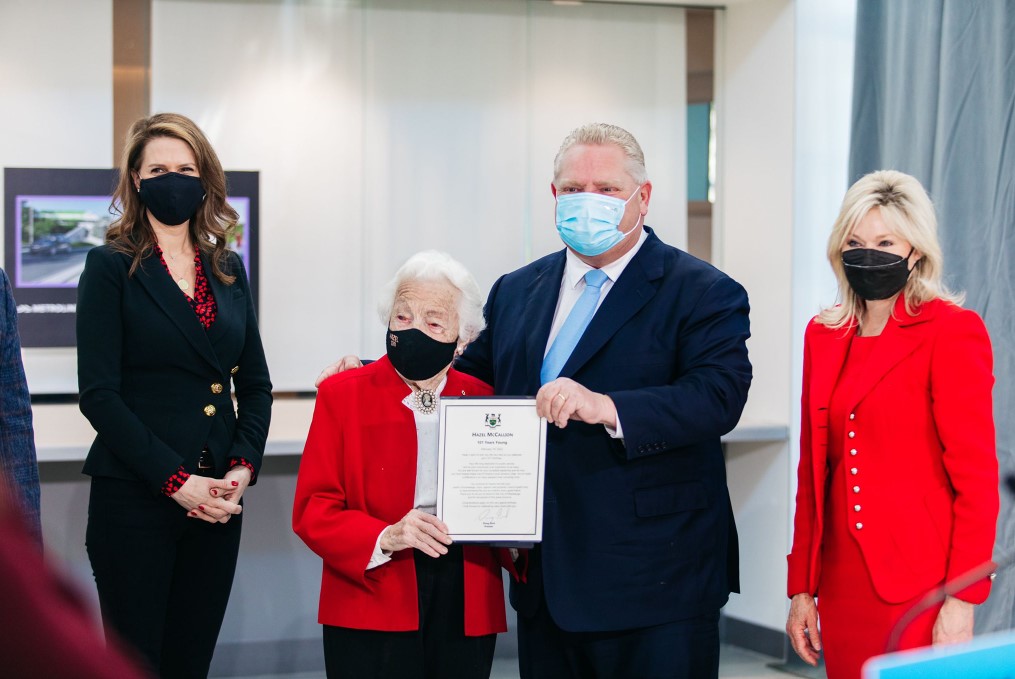
“My finance minister and president of treasury are probably shooting me through the screen for saying that right now, but that’s our goal, to make sure that we finish the loop,” he said.
Overnight, the Hurontario LRT magically appeared in the Progressive Conservatives’ plans. It was mentioned twice in its pre-election $82 billion transit and transportation plan, as well as in Ford’s latest emissions-reduction plan as one of nine transit projects meant to help decrease greenhouse gases.
“It’s going to be such an asset to the city,” McCallion told reporters, as she remembered pitching the idea of light-rail transit once during her 36-year reign. Two months later, McCallion endorsed Ford as the “people’s premier.”
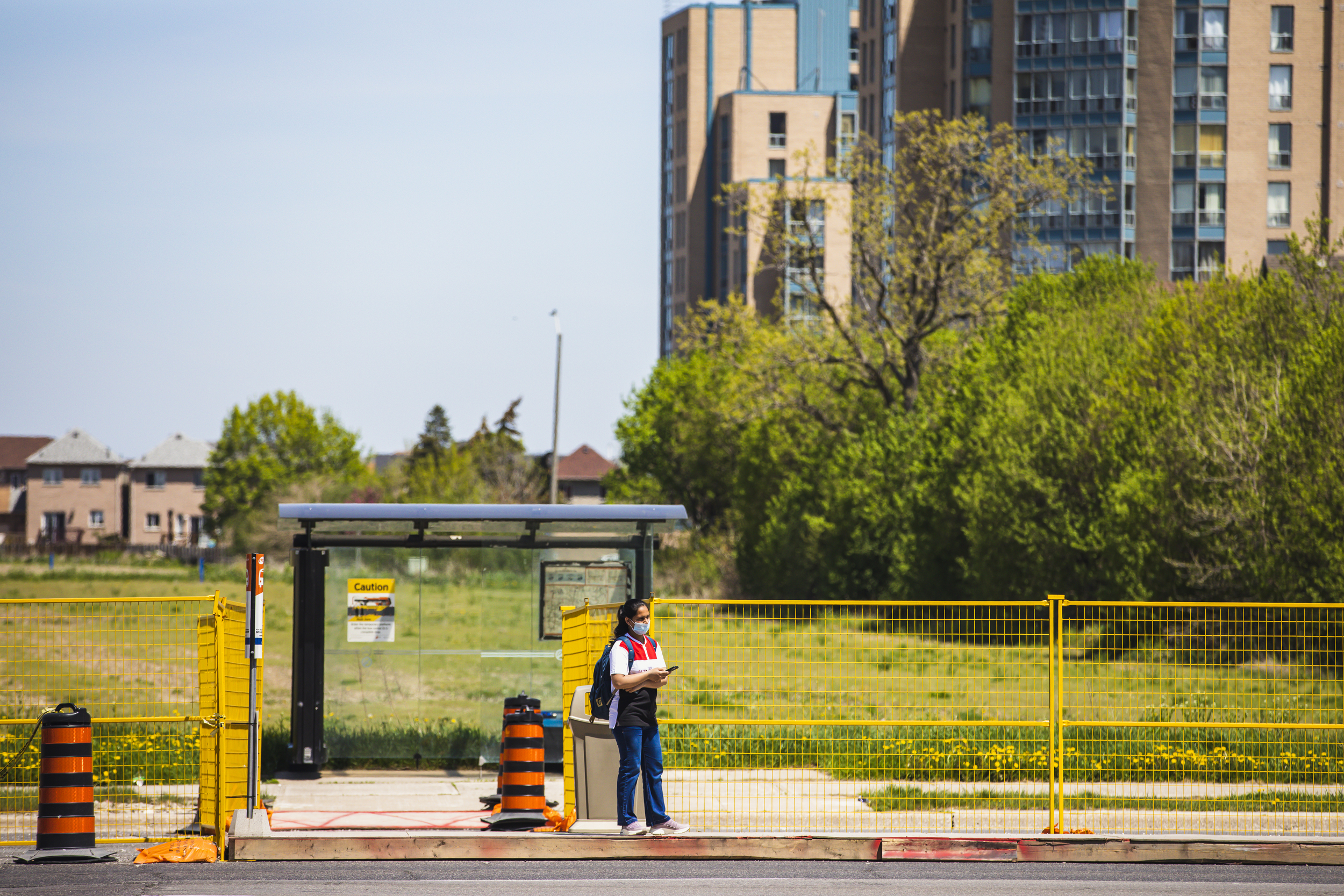
Right now, the Progressive Conservatives hold six of 12 provincial seats in Peel Region. But voters in Mississauga and Brampton are fickle, shifting from blue to red with speckles of orange from election to election. For Ontario politicians, these two cities have often made the difference between winning minority or majority governments.
This election, transportation is a key issue for residents, and the parties are catering to that. Both the Ontario Liberals and NDP are promising to extend the LRT route farther north towards Brampton’s centre and to keep the City Centre loop. The Progressive Conservatives’ pre-election budget mentions the LRT twice in passing, with no details on extending it or about the loop Ford announced.
Mississauga and Brampton’s transit systems had a combined total of over 70 million riders in 2019, and some transit users are optimistic about the Hurontario LRT.

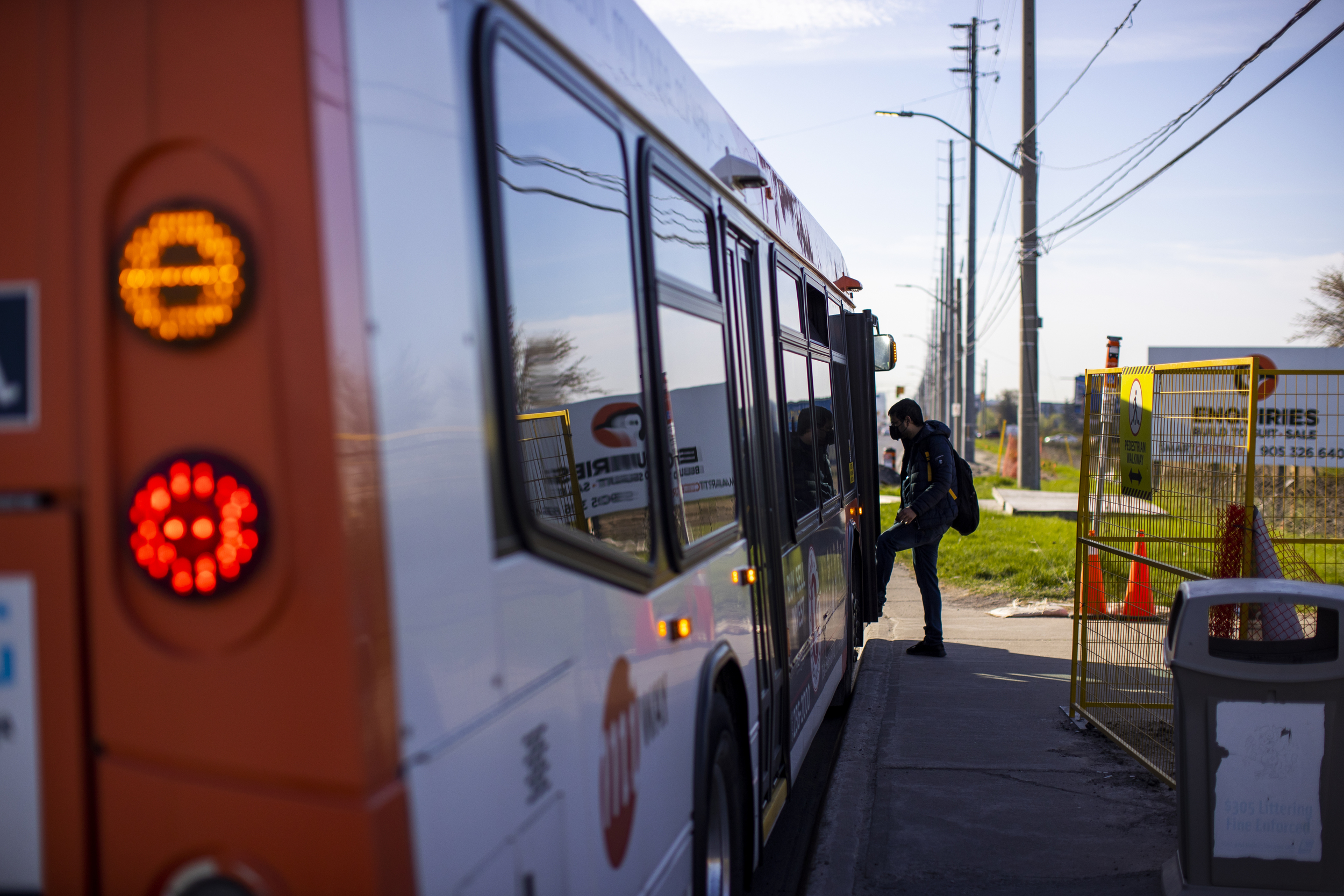

Farther south of Square One, at one of Mississauga’s busiest intersections, lab technician Aruna Vikram says “it’ll be a good idea for those of us who live on Hurontario and go to the lake a lot.”
Other commuters in Peel Region don’t believe the LRT will help them or their cities. A common complaint is that it barely makes its way through Brampton. It also only runs north-south, meaning commuters are still forced to take a bus — or several — to reach destinations to the east or west.
That includes workers at the Amazon distribution facility on the edge of both cities, commuters that politicians and Metrolinx often cite as key beneficiaries of the Hurontario line. Parminder Kaur, an international student and Amazon worker, disagrees. Her daily commute from Etobicoke to work is an hour and a half each way, and that won’t change.
“The LRT doesn’t connect to Etobicoke, so it doesn’t help me” she says, noting she’d still have to catch several buses. “If the train runs overnight, that might help, but it depends on the stops.”
And in the short term, it’s made her trip worse. Heading south from the Brampton Gateway Terminal, bus stops are far apart, making for long walks for transit users. Stops are inconveniently placed between intersections: as buses line up at them, traffic is put on a standstill.

Other skeptics cite the exorbitant cost, and the unlikely scenario that the 2024 timeline will be met, given the history of transit projects in the region.
The southernmost end of the Hurontario LRT route is at the tip of Mississauga’s lakeshore. The line’s only underground tunnel will be here, at the Port Credit GO station, and tracks have already been laid. A four-lane road has become just two lanes surrounded by pylons, as everything gets reconfigured to make space for the train. There, a construction worker laughs when asked if the project is on track. “Nothing’s ever on time,” he says before going back to moving construction material in the shadow of a torn “it’s happening” sign.
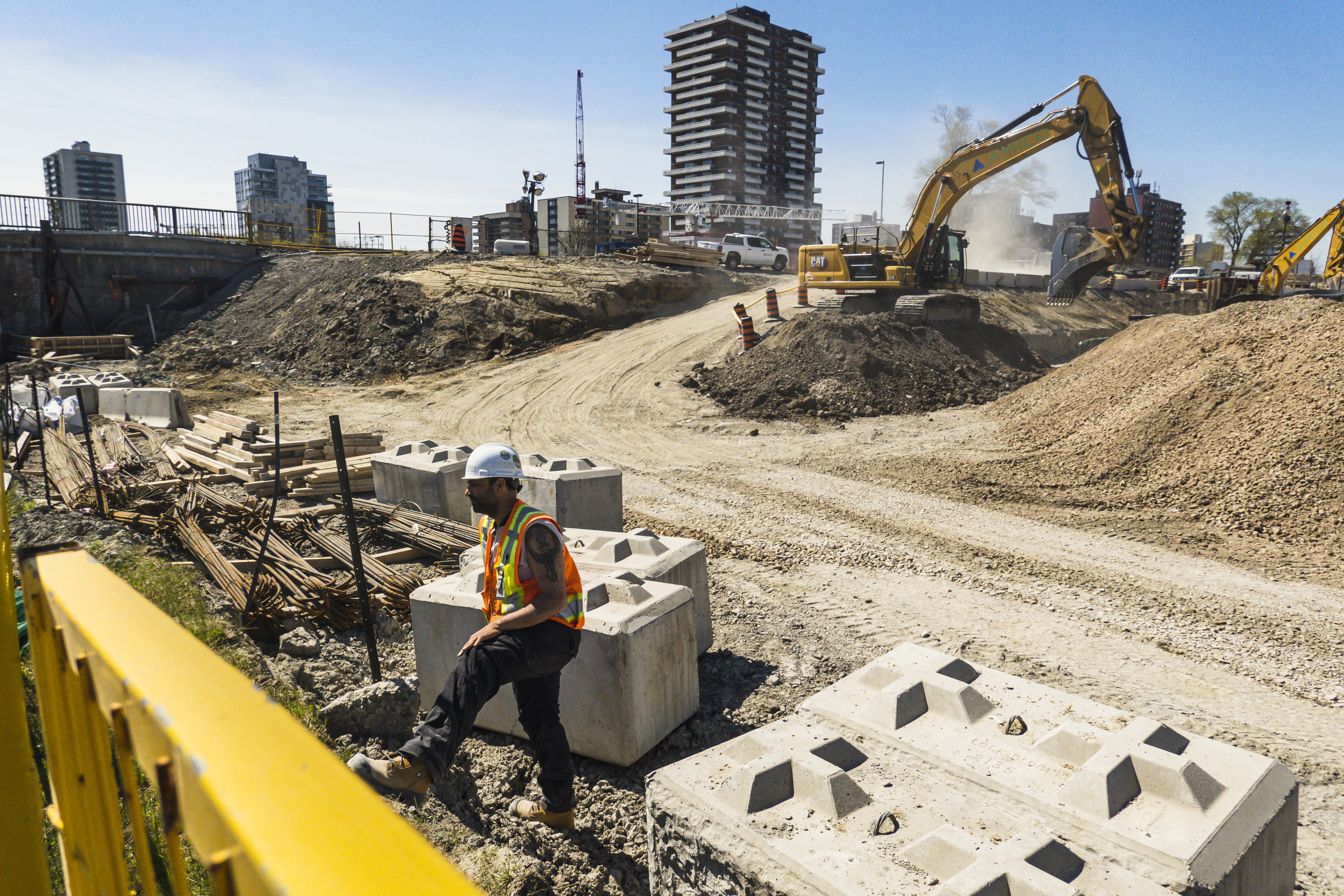

Jo Nguyen is the owner of Jasper Stone Gentlemen’s Barbershop, a small hair salon in a plaza opposite Mississauga’s Port Credit GO station. “It’s a lot of chaos,” she says, adding that she’s lost business because no one wants to come down Hurontario anymore due to the construction.
Nguyen has lived in Mississauga all her life and doesn’t believe people will abandon their cars to take rapid transit to the lake with all their day-trip things. In the six years that she’s been at this plaza, she says she’s never seen more than two people on a bus this far down the roadway.

Many residents also say that no one — not their city government, Metrolinx, or the province — has really informed the public about the scope, timeline and scale of the project.
At the Esso gas station that he works at on Hurontario Street, worker Vaibhav Sharma has a series of questions about the LRT that no one has answered. Will buses still run alongside the train, giving him both options at odd hours? Will fares be based on the length of a trip? Will the train have its own traffic light? What’s certain is that the construction has made the 30-minute commute a pain for Sharma, who came to Canada last April.

“Honestly, the LRT feels like an afterthought for our cities,” says Celina Bibin, a Mississauga resident of two years. She has just rushed from one makeshift bus stop in Brampton to another one near Sharma’s gas station, and is standing on a small patch of grass amid construction to wait for her bus to work.
“I don’t know how quick it’ll be, so I don’t know what difference it’ll make,” Bibin says, adding that missing a bus means waiting at least 20 minutes for another one. She gives herself two hours to travel the 15 kilometres to work by transit. “And, honestly, whatever mode of transportation they build here, please make it fast, because moving is very slow here. Very, very slow.”

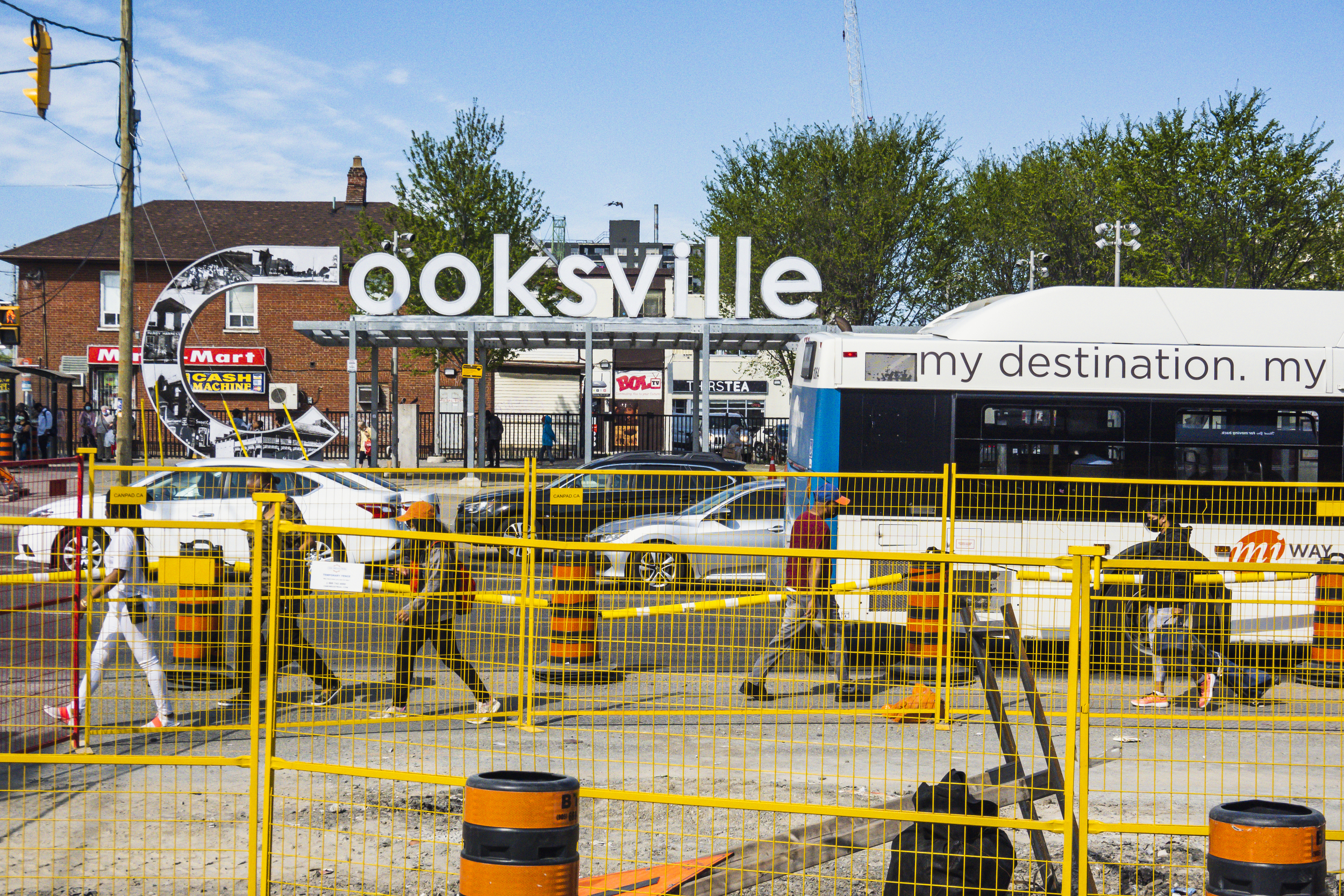
Updated on May 30, 2022, at 8:09 p.m. EST: This story has been updated to correct the last year that Hazel McCallion was mayor of Mississauga. Her last term ended in 2014, not 2004.
Get the inside scoop on The Narwhal’s environment and climate reporting by signing up for our free newsletter. On a warm September evening nearly 15...
Continue reading
Governments of the two provinces have eerily similar plans to give themselves new powers to...

Katzie First Nation wants BC Hydro to let more water into the Fraser region's Alouette...

Premier David Eby says new legislation won’t degrade environmental protections or Indigenous Rights. Critics warn...
